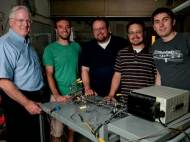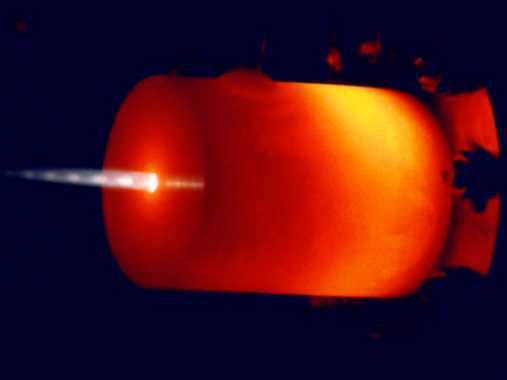Rocket science used to make wastewater treatment sustainable
 Within the sludge of wastewater treatment plants is an invisible world teeming with microbes. Here, diverse species of bacteria convert solid and liquid wastes into gases, some of which contribute to global warming. Two Stanford University engineers are developing a new sewage treatment process that would actually increase the production of nitrous oxide (“laughing gas”) and methane to use the gases in order to power the treatment plant.
Within the sludge of wastewater treatment plants is an invisible world teeming with microbes. Here, diverse species of bacteria convert solid and liquid wastes into gases, some of which contribute to global warming. Two Stanford University engineers are developing a new sewage treatment process that would actually increase the production of nitrous oxide (“laughing gas”) and methane to use the gases in order to power the treatment plant.
Craig Criddle, a professor of civil and environmental engineering and senior fellow at the Woods Institute for the Environment at Stanford, has joined forces with Brian Cantwell, a professor of aeronautics and astronautics, who has spent the last five years designing rocket thrusters that run on nitrous oxide.
Conventional treatment plants pump air into wastewater sludge in a process called aeration. The idea is to convert nitrogen waste into harmless nitrogen gas by promoting oxygen-loving bacteria that thrive on sugars and other organic matter in the sludge. But aeration is a costly and energy-intensive process. As an alternative, the Stanford team wants to create a low-oxygen environment in the treatment plant, where nitrous oxide-producing bacteria are favored while aerobic species die off.
These nitrous oxide producers consume relatively small amounts of organic matter. That’s good news for other anaerobic microbes that produce methane gas by feasting on organic compounds. “When bacteria make nitrous oxide, less organic matter is oxidized, so more can be converted into methane – potentially two or three times more than is possible in a typical treatment plant,” Criddle said. “That extra methane can be used as fuel to run the plant independent of outside power sources.”
In recent experiments, the researchers demonstrated that under laboratory conditions nitrous oxide gas could be produced from wastewater using a low-oxygen technique. But there’s a downside to the process. Nitrous oxide is a significant greenhouse gas that’s more than 300 times more potent than carbon dioxide. That’s where Cantwell’s rocket thruster comes in. Designed for use in spacecraft, the thruster runs on nitrous oxide – a surprisingly clean-burning propellant.
“When it decomposes, nitrous oxide breaks down into pure nitrogen and oxygen gas,” Cantwell explained. “At the same time, it releases enough energy to heat an engine to almost 3,000 degrees Fahrenheit, making it red hot, and it shoots out of the engine at almost 5,000 feet per second, producing enough thrust to propel a rocket.”
Cantwell envisions a new generation of plants that are energy self-sufficient. “You even have the prospect of installing a wastewater facility where there is no energy source,” he said. “This could be especially important in the Third World, where millions of people live with contaminated water.”
Both researchers say that the technology could have other applications beyond wastewater treatment. For example, they also want to explore ways to recover energy from nitrate-contaminated groundwater beneath fertilized agricultural fields.










Very Innovative method to treat waste water.
Dr.A.Jagadeesh Nellore(AP),India